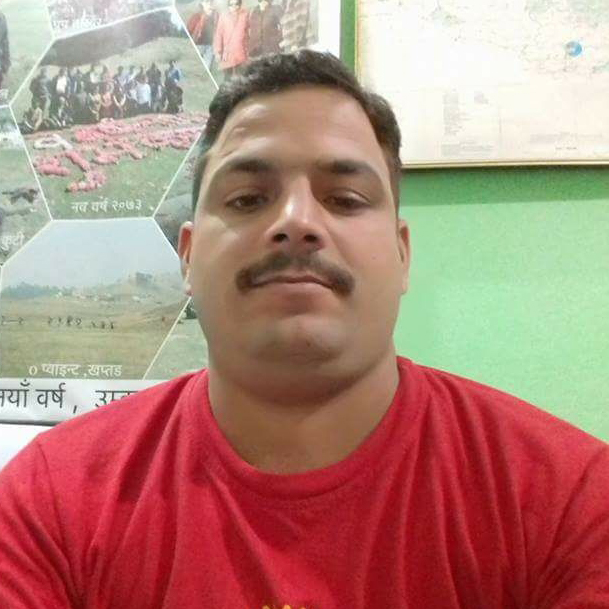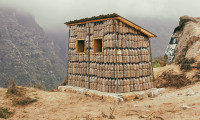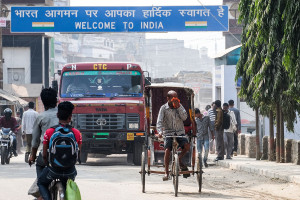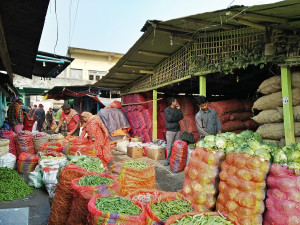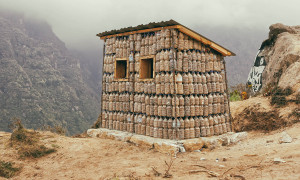Money
Tree cutting begins for Dodhara Chandani dry port construction
Located 245 km from New Delhi and approximately 1,200 km from Gujarat, the port is expected to facilitate trade with Indian states such as Rajasthan, Uttarakhand, Punjab, and Haryana.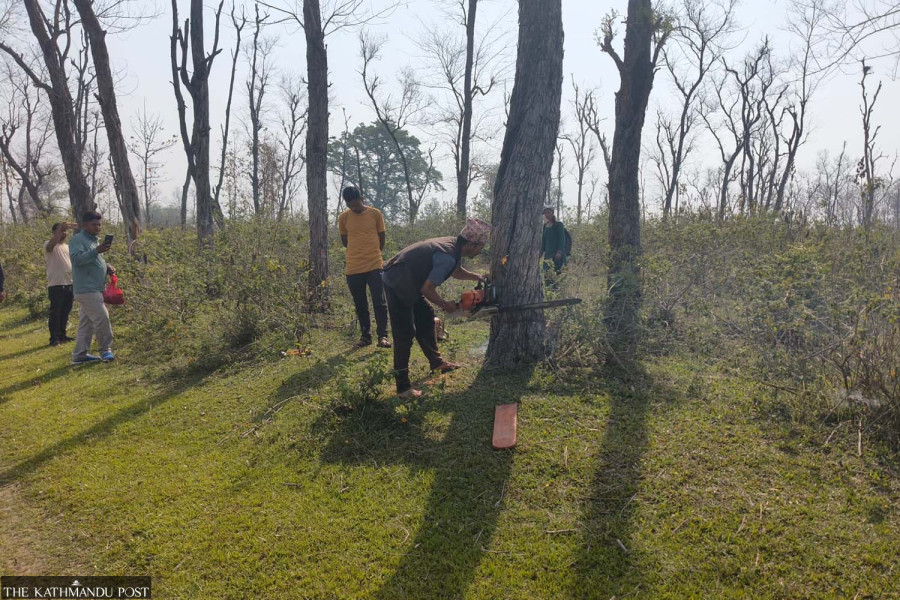
Bhawani Bhatta
Tree felling has finally begun for the construction of the Dodhara Chandani dry port in Nepal’s far west.
Set to become Nepal's fourth dry port along its border with India, the Rs2.54 billion project will serve as a major logistical hub and expand landlocked Nepal's access to India through the Jawaharlal Nehru Port in Mumbai.
The work began last week in the Mayapuri Community Forest through a tender awarded by the Nepal Intermodal Transport Development Board.
Ashish Gajurel, executive director of the board, stated that the trees removal would be completed within two months, as the work progresses rapidly. “Since India is still in the tender process, we aim to clear the land by the time their process concludes,” he added.
Because the Mayapuri Community Forest lies within the buffer zone of Shuklaphanta National Park, the felling of trees is being carried out under the supervision of the park administration.
Anish KC, an engineer at the board, explained that delays occurred due to the transfer of park officials shortly after the work began. According to KC, a contract worth Rs4 million was signed for the work which involves removing 1,593 trees.
The government approved the project's Environmental Impact Assessment (EIA) report in 2023.
Subsequently, on September 18 last year, the provincial cabinet authorised using 43 hectares of the Mayapuri forest for the dry port, clearing the final major obstacle to the development.
The board has signed an agreement with the Department of National Parks and Wildlife Conservation and deposited Rs150 million into the department’s account as compensation for the environmental impact caused by the tree felling.
Access roads on both the Nepal and Indian sides are currently under construction.
On the Nepal side, a four-lane concrete bridge over the Mahakali river and a six-lane access road from Gaddachauki to Malaria Nala have been completed.
On the Indian side, road construction from the Chakkarpur area of the national highway is ongoing.
According to Gajurel, India is currently in the evaluation phase of tender to select construction companies for the dry port project, which is being developed entirely with Indian government funding.
The dry port project has been discussed for more than 15 years. Twin Integrated Check Posts are planned along the Nepal-India border, with the Indian facility to be built in Banbasa and the Nepali one in Dodhara Chandani—both under Indian grants. The projected completion timeline for the dry port is 30 months.
Once completed, the Dodhara Chandani dry port will serve as a key trade gateway to India from Nepal’s far-western region.
Located 245 km from New Delhi and approximately 1,200 km from Gujarat, the port is expected to facilitate trade with Indian states such as Rajasthan, Uttarakhand, Punjab, and Haryana.
It will also give Nepal access to Jawaharlal Nehru Port in Mumbai, enhancing foreign trade opportunities and reducing transportation costs.
Nepali officials believe the project will lead to significant savings in goods transportation, especially since most of the country’s current trade infrastructure is centred in the east and relies heavily on the Kolkata Port.
Establishing a dry port in Sudurpaschim Province could open access to additional Indian ports and improve logistics nationwide.
Talks surrounding the dry port began nearly two decades ago. After years of effort and planning, the project is finally moving forward. It is also seen as a critical step toward connecting Dodhara Chandani—located next to the Mahakali river—to broader national development goals and as a key economic driver in the far-western region.
Some political leaders envision the dry port evolving into a tri-junction for trade between Nepal, India, and China. The Mahakali Corridor, which spans 334 km, connects Kanchanpur in the south to Tinkar Bhanjyang on the Nepal-Tibet border to the north.
A four-lane concrete bridge and an 8 km road leading to the dry port have already been completed or are in the final stages. According to the master plan, the facility will eventually accommodate 3,000 twenty-foot freight containers. In the initial phase, space will be provided for 300 containers.
The port will include a 7,000-square-metre import warehouse and a 2,520-square-metre export warehouse. A 17,500 sq m railway warehouse is also planned, alongside a 10,000 sq m container stacking yard for efficient container handling.
The World Bank conducted a feasibility study for the dry port over 15 years ago, and the Nepal Intermodal Transport Development Board prepared a follow-up report in 2016. Initially, the government planned to construct the facility in Ward 8 of Chandani Municipality, in Kanjabhoj.
However, the project was relocated to Ward 1 due to local protests.
The Indian government officially agreed to support the project during the then-prime minister Pushpa Kamal Dahal’s visit to the country in 2023.




 17.12°C Kathmandu
17.12°C Kathmandu